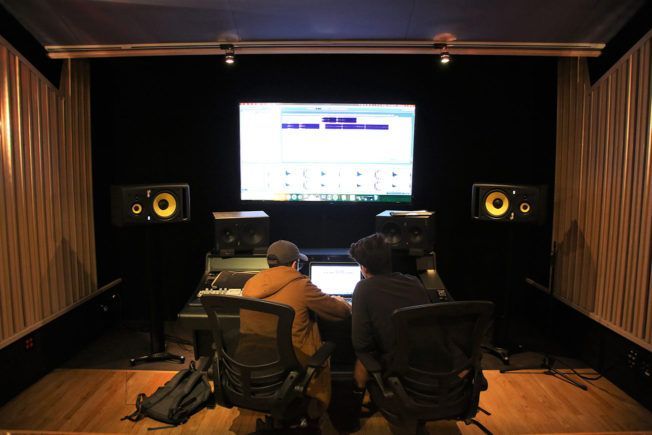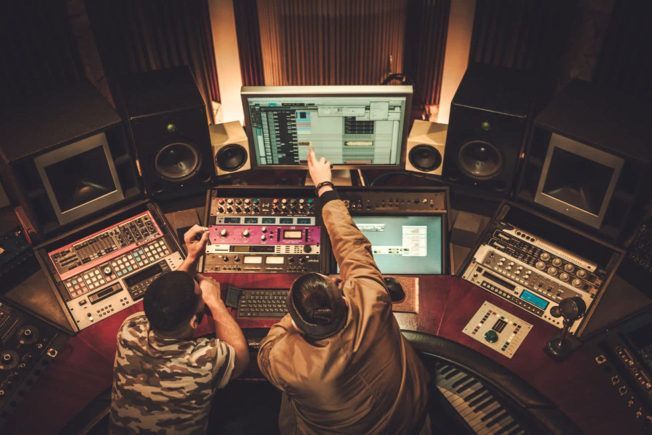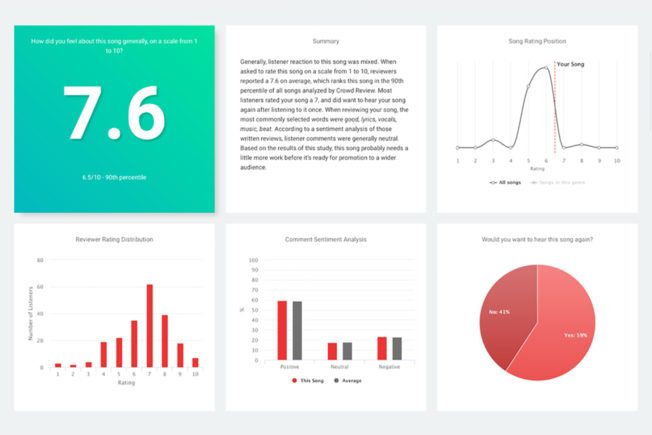Check out our 15 best music business tips of 2019. Learn how to build a foundation for long-term music industry success.

Music Business Tips
Breaking into the music industry is challenging. It can be an overwhelming process learning music business in a rapidly changing music industry. Especially if you are busy improving your craft and finding inspiration for new music.
There’s lots of information on how to get into the music industry and what to do once you’re there. These music business tips offer essential guidance that will help you jump-start your music career and navigate the music industry as an aspiring artist. Learn the latest in music marketing, branding, distribution, publishing, collaboration, artist development, and more.
1. Being an Independent Artist vs. Signing to a Record Label

Should you go independent or sign with a record label? Learn the advantages and disadvantages of releasing music as an independent artist vs. signing with a record label.
2. How to Build a Fan Base for Your Music

Learn how to build your fan base. Here are ten tips that will help you boost fan engagement, promote your brand, and increase fans.
3. How to Design Effective Album Cover Art

Learn how to create stunning album cover art that will grab someone’s attention and get your music heard. This guide outlines cover art design best practices.
4. 5 Reasons Why Music Collaboration Is Necessary

What is music collaboration, and how can this skill advance your music and career? Learn five benefits of collaborating with other creatives in the music industry.
5. Digital Music Distribution: How to Sell Your Music Online

Learn what digital music distribution services are and how they help independent artists and record labels sell music online.
6. What Is an A&R in the Digital Age

What is an A&R? Learn how the A&R role is changing in the digital age and how to get the attention of an A&R to increase your odds of getting signed.
7. How to Get Noticed by a Music Booking Agent

Learn how to get noticed by a music booking agent. This guide explains the importance of a booking agent. It also offers tips on how to get noticed by a booking agency.
8. How to Brand Yourself: 5 Music Branding Tips

Learn how to brand yourself in the music industry. ICON Grad Nick Voorhees shares five music branding tips to help you define your brand.
9. What Are Neighboring Rights and How to Collect Them?

What are neighboring rights royalties? Learn about neighboring rights and how to collect royalties generated internationally from your music.
10. Email Marketing for Musicians: How to Build a Mail List
What is email marketing for musicians? Learn how to use email marketing to grow your fan base, promote your music, and boost your music career.
11. How to Design an Effective Music Website

Learn how to design an effective music website. Here are ten tips for building a musician website that connects with your fans and music industry peers.
12. What Is the Music Modernization Act and Why It Matters?

What is the Music Modernization Act? Learn how this massive update to U.S. copyright and publishing laws will affect your music and the music industry.
13. Everything You Need to Know About a Split Sheet

What is a songwriter split sheet? Learn how to manage split sheets when collaborating with other artists to ensure you get paid for your work.
14. What Is a Music Supervisor and Why It Matters?

What is a music supervisor? Learn the role of a music supervisor and the art of music supervision to reach new audiences with your music.
15. How to Ask for Music Feedback to Improve Your Songs

Music feedback will help you make better-informed decisions with your music. Learn how to ask for feedback on your songs and how to apply it to improve your music.

Turn your passion for music into a Profession: Learn more about our Music School Programs!
Join our Newsletter
Get the the latest music industry insights, invites to exclusive events and workshops, and artist spotlights straight in your email.
MORE ARTICLES FROM THE ICON BLOG

FIND YOUR SOUND, HONE YOUR CRAFT:
Are you ready to turn music into a career? ICON prepares students to become music producers, composers, performers, recording artists, professional DJs, and entrepreneurs in the entertainment industry. Click below to get information about our award-winning programs:

